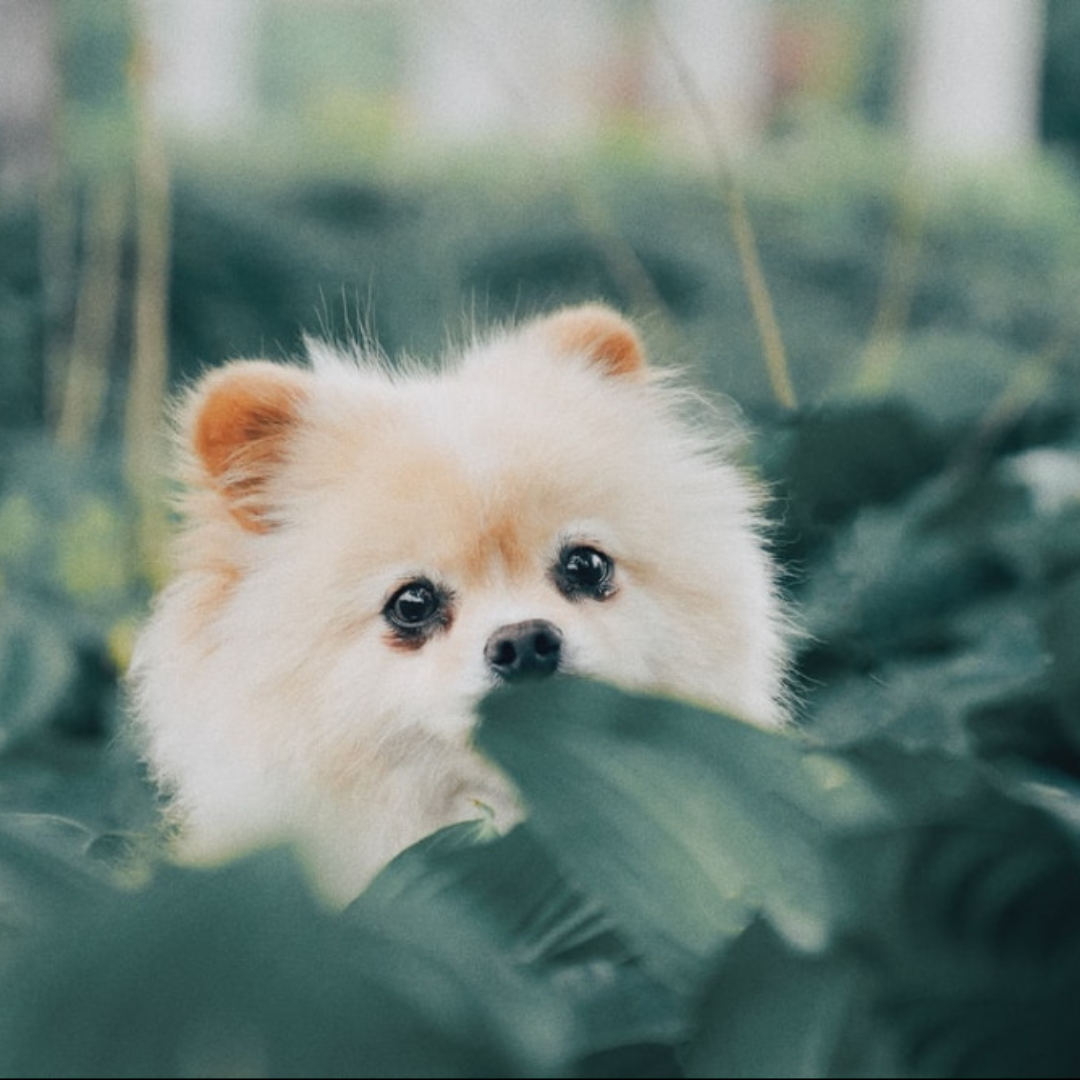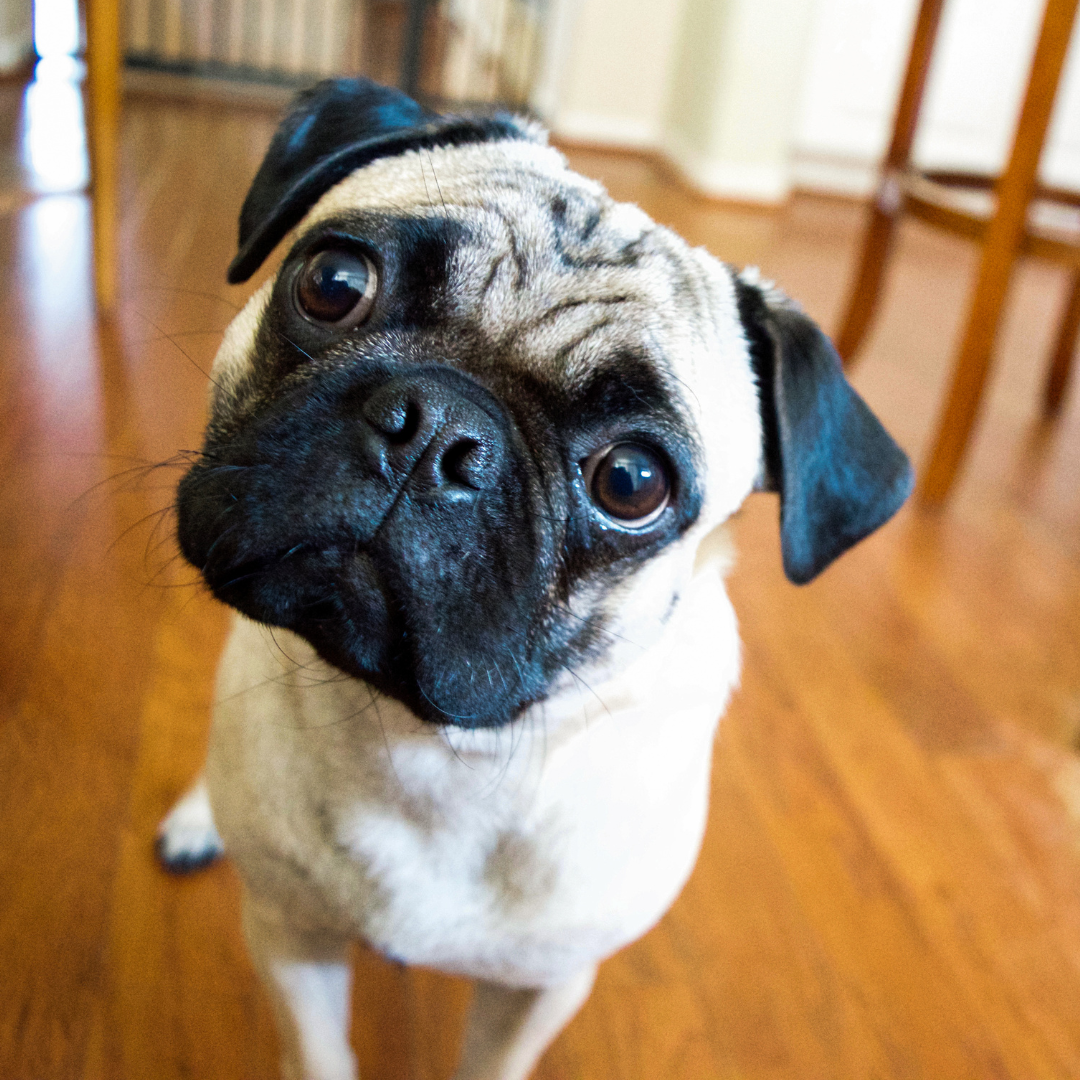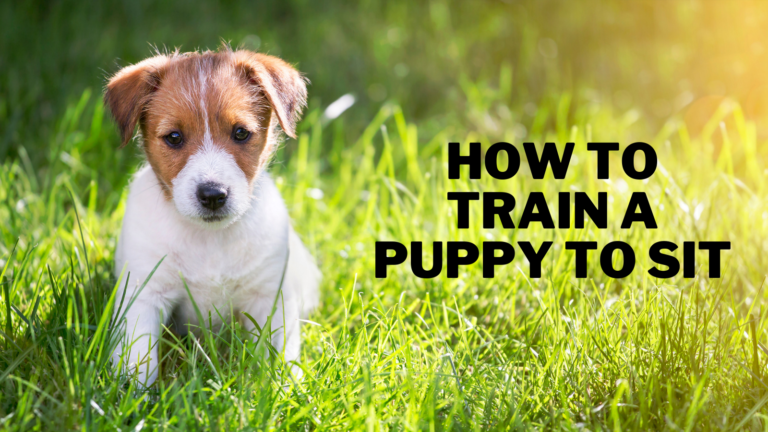Best Tips To Train A Puppy To Use A Pee Pad
Best Tips To Train A Puppy To Use A Pee Pad
House-training a puppy can be challenging, but using a pee pad can make the process easier for you and your furry friend. Pee pads provide a designated spot for your puppy to relieve themselves indoors.
They are a convenient option for pet owners who live in apartments, have limited outdoor space, or have pets that can't go outside due to weather or health concerns.
However, training your puppy to use a pee pad requires patience, consistency, and positive reinforcement.
This article will explore tips and strategies for successfully training your puppy to use a pee pad, including setting a routine, using rewards, and maintaining a clean and odour-free living space. With the right approach, your puppy will be a pro at using pee pads in no time.

What Is A Pee Pad?
A pee pad, also known as a puppy pad, is a type of absorbent material used to house-train puppies or other small pets.
They are typically made of layers of absorbent material, such as paper or plastic, with a waterproof backing to prevent leaks.
Pee pads are designed to absorb urine and other liquids and can be placed on the floor or in a designated area to provide a convenient spot for pets to relieve themselves.
Pee pads are a popular option for pet owners who need an indoor alternative for their puppy to relieve themselves.
They are easy to use and come in various sizes and materials, including disposable and washable options.
Pet owners who live in apartments, have little outdoor space and have pets that cannot go outside due to health issues or bad weather will find pee pads especially helpful.
Additionally, pee pads can be useful for house-training puppies or dogs not yet accustomed to going potty outside.
Pee pads are also helpful for senior dogs with difficulty holding their bladder for long periods.
While some pet owners prefer to train their pets to go outside, pee pads can be a convenient and hygienic solution for those who need an indoor option.
With proper training and maintenance, pee pads can help keep your home clean and odour-free while providing a designated spot for your furry friend to do their business.

Tips To Train A Puppy To Use A Pee Pad
Training a puppy to use a pee pad can be useful for pet owners who live in apartments or have limited outdoor access.
To successfully train your puppy to use a pee pad, it is important to choose the right size and absorbency and set up a designated area in your home for your puppy to use it.
Pee pads are a convenient and sanitary way to ensure your puppy has a designated spot to relieve themselves.
Here are some tips to help you train your puppy to use a pee pad:

1. Choose The Right Pee Pad For Your Puppy
Choosing the right pee pad for your puppy is an important step in the training process. When selecting a pee pad, consider the size of your puppy and the amount of urine they typically produce. Pads come in various sizes, from small pads for puppies to larger pads for adult dogs.
The absorbency of the pee pad is also crucial. A pad that is not absorbent enough will leak, causing a mess and potentially ruining your floors.
Disposable pee pads are typically more absorbent than washable pads but can be more expensive in the long run.
Consider the frequency of pad changes that will be required, especially during the initial training period when accidents are more likely to occur.
It's also important to choose a pee pad that is designed for puppies. Adult pads may be too large or absorbent for your puppy's needs.
Puppy pee pads are designed to be smaller, more absorbent, and have a scent that can help attract your puppy to use them.

2. Choose The Right Location For Your Puppy's Pee Pad
Choosing the right location for your puppy's pee pad is essential to successful house training. It's important to select a spot that is easily accessible to your puppy, as this will encourage them to use the pad regularly.
Consider choosing a corner of a room or a designated area in a hallway or bathroom that is easy for your puppy to reach.
Keeping the pee pad away from your puppy's food and water bowls is also important. Dogs instinctively avoid soiling the areas where they eat and drink.
So, placing the pad too close to their food or water may discourage them from using it. Similarly, avoiding placing the pee pad too close to your puppy's sleeping area is important.
Dogs typically prefer to avoid eliminating in areas where they sleep, so placing the pad too close to their bed may lead to accidents in the bed. Once you have chosen a location, consistently use that spot for the pee pad.

3. Start With Confinement
When you first begin training your puppy to use a pee pad, it can be helpful to start with confinement to a small area that includes the pee pad.
This helps to limit their access to the rest of the house and encourages them to use the designated spot.
Using a playpen or a crate is a great way to create a space that is just large enough for your puppy to sleep and play in.
This area should be large enough for your puppy to move around but small enough that they cannot easily avoid using the pee pad.
Place the pee pad in the corner of the playpen or crate opposite your puppy's sleeping area. This helps establish a clear separation between their sleeping and elimination areas.

4. Encourage Your Puppy To Use The Pee Pad
Encouraging your puppy to use the pee pad is an important part of the training process. When your puppy wakes up from a nap or finishes eating or drinking, immediately take them to the pee pad. This will help them associate the pee pad with the act of elimination.
Use a specific command, like “go potty,” every time you take your puppy to the pee pad. This will help them understand what you want them to do.
When your puppy successfully eliminates the pee pad, praise them enthusiastically. You can offer treats, verbal praise, or even a favourite toy as a reward.
This positive reinforcement will help reinforce good behaviour and encourage your puppy to continue using the pee pad.
It's important to remember that accidents may still happen during the training process. If your puppy has an accident outside the designated area, clean it up and continue the training process. Avoid punishing your puppy, as this can create confusion and anxiety.

5. Monitor Your Puppy's Behaviour
Monitoring your puppy's behaviour is essential to the success of pee pad training. You should watch your puppy closely and know the signs they need to use the pee pad.
One of the most common signs is sniffing around or circling, which indicates that your puppy needs to go.
When you notice these signs, immediately take your puppy to the pee pad, using the command you've chosen to encourage them to eliminate.
If your puppy has an accident outside the designated area, clean it up thoroughly and continue the training process.

6. Use Positive Reinforcement
Positive reinforcement is a key element of successful pee pad training. When your puppy successfully uses the pee pad, praise them enthusiastically.
Use a happy, positive tone of voice and offer plenty of verbal praise and petting. Treats are another great way to reinforce good behaviour.
Give your puppy a small, tasty treat immediately after they use the pee pad correctly. Consistency is crucial when using positive reinforcement.
Praise your puppy every time they successfully use the pee pad, even if they've done it correctly multiple times.
Avoid scolding or punishing your puppy for accidents. This can confuse your puppy and make them afraid of using the pee pad.

7. Set A Routine For Pee Pad Training
Setting a routine for pee pad training is an important part of successfully teaching your puppy to use the pee pad.
Puppies thrive on routines and consistency, so establishing a regular schedule for taking them to the pee pad will help them learn when to go and reduce the chances of accidents.
To start, establish regular feeding times for your puppy. Feeding your puppy at the same time every day will help regulate their digestive system and make it easier to predict when they will need to use the pee pad. After meals, take your puppy to the pee pad to encourage them to relieve themselves.
In addition to feeding times, establish regular times to take your puppy to the pee pad throughout the day. This could include immediately after waking up, playing, and bedtime.
Be consistent with these times, and gradually adjust the routine as your puppy gets older and their bladder control improves.
Keep a log of your puppy's eating, drinking, and potty times to help identify patterns and adjust the routine.

8. Use A Consistent Spot For Your Puppy's Pee Pad
Using a consistent spot for pee pad training is an important part of teaching your puppy to associate the pad with a specific location.
Select a location that is easy for your puppy to get to and close to where they spend most of their time.
This could be a corner of a room or a specific area in your home. Keeping the spot clean and free of smells or messes is important. This will help your puppy learn to associate the pad with a clean and acceptable place to go potty.
Consider using multiple pee pads in different locations if you have a larger home. This will make it easier for your puppy to access a pad when needed.

9. Gradually Increase Space
Gradually increasing your puppy's space as they become more comfortable using the pee pad is an important step in their training.
Once your puppy has learned to use the pee pad consistently and has not had accidents, you can remove the playpen or crate you used for confinement.
This will allow your puppy to explore a larger area that includes the pee pad. Start by giving your puppy access to one additional room or a larger section of your home. This will give them more space to explore and easy access to the pee pad.
If you're adding a room, also place a pee pad. As your puppy becomes more comfortable using the pee pad in different areas of your home, you can gradually reduce the number until they only use one.

10. Watch For Signs Of Confusion
It's not uncommon for puppies to become confused or overwhelmed during the pee pad training process, especially if they have too much space or access to multiple pee pads.
If you notice your puppy having accidents or seeming unsure, it may be helpful to restrict their space again temporarily.
This can be done by placing them back in a smaller playpen or crate or limiting their access to certain areas of your home.
Ensure you continue taking your puppy to the pee pad and reward them when they use it correctly.
Consider using a verbal command or signal to help them associate certain behaviours with going to the pee pad.
If your puppy continues to struggle with using the pee pad or you're not seeing progress, consider contacting a professional trainer or behaviourist for additional guidance.

11. Clean Up Accidents Thoroughly
When cleaning up accidents, use enough cleaner to soak the affected area thoroughly. If the scent of urine remains, your puppy may think it's an acceptable place to go potty.
Additionally, avoid using ammonia-based cleaners as they can make the urine smell stronger and more appealing to your puppy. Finally, be patient with your puppy.
Pee pad training takes time, and accidents are bound to happen, so stay consistent with your routine and positive reinforcement to help your puppy learn and grow.
Potty training a puppy can be a challenging but rewarding experience, and using a pee pad is a popular option for pet parents.
It's important to remember that every puppy is unique, and what works for one may not work for another.
Therefore, observing your puppy's behaviour and adjusting your training techniques is essential. Stay encouraged if there are setbacks or accidents along the way.

12. Be Consistent With Rewards
Consistency with rewards is key in reinforcing the behaviour of using the pee pad. You can gradually phase out the rewards as your puppy becomes more proficient at using the pee pad.
Start by offering the reward every other time, then every third time, and so on, until your puppy consistently uses the pad without needing a reward.
Choose rewards that your puppy loves, such as small pieces of cooked chicken or cheese. These high-value rewards will make the positive reinforcement more effective and increase the chances of your puppy repeating the desired behaviour. When your puppy uses the pee pad correctly, reward them immediately.
This will help them understand that the reward is connected to their behaviour and reinforce the desired action.
When your puppy uses the pee pad correctly, reward them immediately. This will help them understand that the reward is connected to their behaviour and reinforce the desired action.

13. Keep Practicing
One way to continue practicing is to occasionally take your puppy back to basics and confine them to a small space with the pee pad for a brief period. This will help reinforce the routine and remind them where to go potty.
Additionally, it's important to maintain a consistent schedule for taking them to the pee pad and to provide positive reinforcement every time they use it correctly.
With time and patience, your puppy will become fully trained to use the pee pad consistently and without accidents.
In addition, keeping a supply of pee pads on hand is a good idea so you don't run out unexpectedly.
Consistency is key in puppy training, so try to maintain the same brand and type of pee pad to avoid confusing your puppy.
Patience and positive reinforcement are crucial to successfully training your puppy to use a pee pad.
With time, effort, and consistency, your furry friend will learn to use the pee pad independently, and you can enjoy a clean and stress-free home.

Conclusion
In conclusion, training a puppy to use a pee pad requires patience, consistency, and positive reinforcement. Choose the right pad and location, confine your puppy initially, and establish a routine.
Use positive reinforcement, gradually increase space, watch for signs of confusion, and clean up accidents thoroughly.
By following these tips on how to train your puppy, you can successfully teach them to use a pee pad and prevent accidents in your home.
Remember that teaching your puppy to pee on a pad requires patience and persistence. You can help your puppy form wholesome behaviours and avert future mishaps by paying attention to these pointers and being upbeat.
It's crucial to be adaptable and change course if something isn't working. Along the process, remember to congratulate your puppy on his or her accomplishments. Your puppy will master using the pee pad with time and with practice.
I trust you enjoyed this article on the Best Tips To Train A Puppy To Use A Pee Pad. Please stay tuned for more blog posts to come shortly. Take care!
JeannetteZ
>>>Please click here to read my article on A Full Overview Of Dogs And Their Activity<<<
My #1 Dog Training Recommendation
Your Opinion Is Important To Me
Do you have thoughts, ideas, or questions? I would love to hear from you. Please leave me your questions, experiences, and remarks about this article on the Best Tips To Train A Puppy To Use A Pee Pad in the comments section below. You can also email me at Jeannette@Close-To-Nature.org.
You might also enjoy these blog posts:
Best Games To Play With Your Dog At Home








